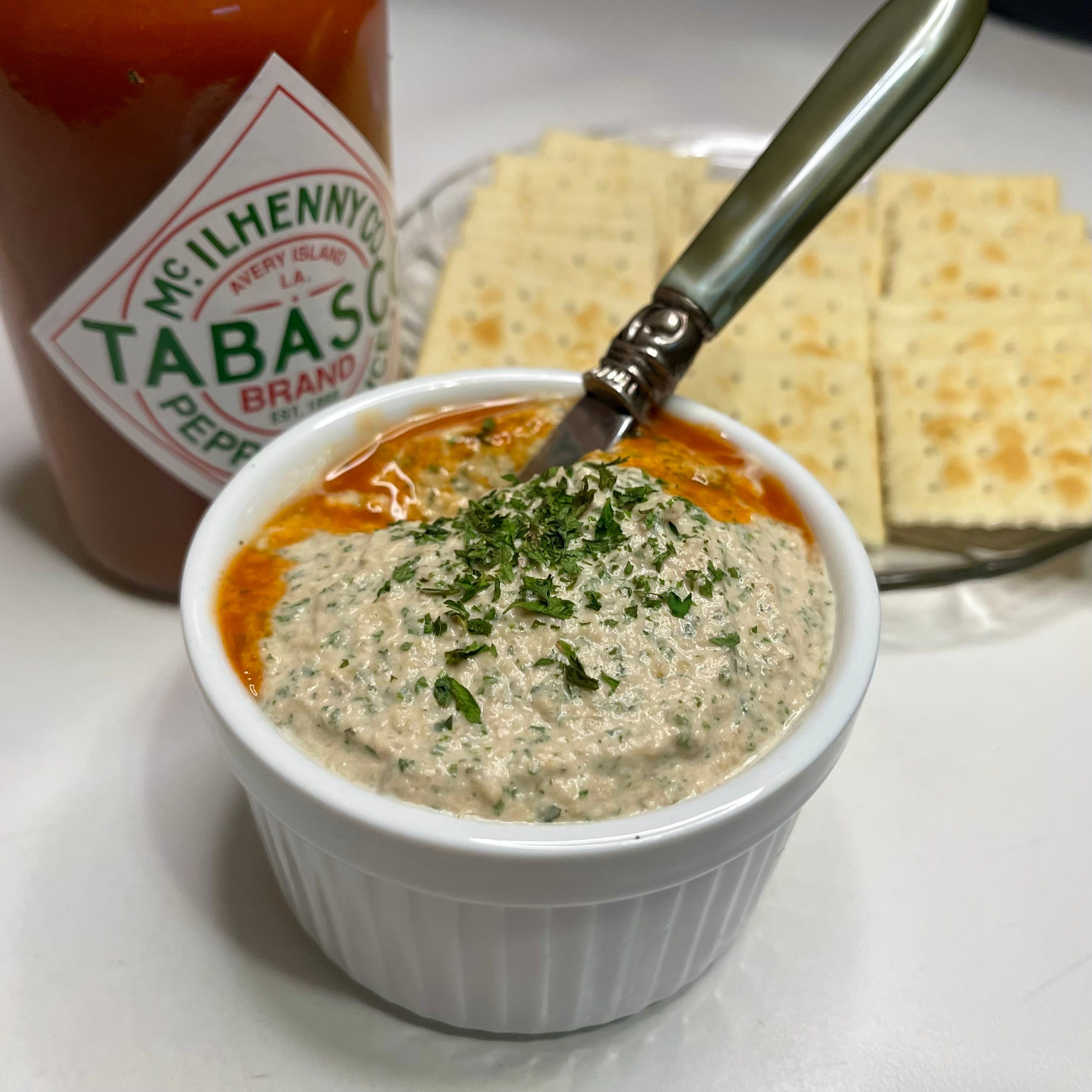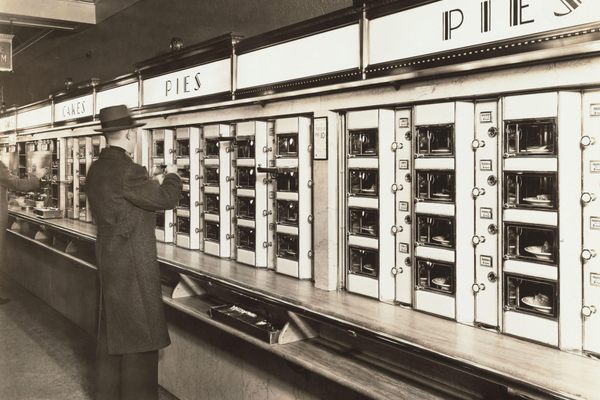Make This Fallout Shelter–Friendly 1960s Ham Spread
The author of this recipe hoped you would never need it.
In 1961, in the midst of widespread panic over possible nuclear war with the Soviet Union, food editor Marie Adams published a timely recipe column in the Charlotte News. The column—originally titled “Can You Make an Appetizing Meal in Your Cellar?”—focused on meals you could make in a fallout shelter, using the emergency supply of nonperishable goods that families were expected to stockpile for an anticipated two weeks underground.
Adams’s column was far from unique. Women’s magazines and government-sponsored preparedness guides for women of the period featured shelter-friendly menus of three varied meals per day, with tips on counting calories to make sure your children were properly nourished. Propaganda placed extreme pressure on wives and mothers to prepare healthy, satisfying food for the family in times of crisis, just as they were expected to do under normal conditions.
View this post on Instagram
Simultaneously, women weren’t expected to have any opinions on the crisis itself, or to have much interest in the world outside their home and family. In 1963’s The Feminine Mystique, feminist author Betty Friedan wrote of the prevailing belief among women’s magazine editors of the time (many of them men) that global issues had to be “translated” into terms women could understand. As an example, Friedan cited an article pitched to one such magazine on how to give birth in a fallout shelter. “The article was not well-written, or we might have bought it,” an editor told Friedan. The assumption, Friedan wrote, was that a female audience “might be interested in the concrete biological details of having a baby in a bomb shelter, but never in the abstract idea of the bomb’s power to destroy the human race.”
After Adams published her fallout-shelter recipe column, a critical reader accused her of being “more interested in the preservation of the symbols of affluence than in survival.” On the one hand, this critique alludes to the rampant consumerism of the fallout-shelter era, in which survival was promised for those who could afford a private shelter and goods to stock it with. On the other hand, it fails to take into account how much pressure women like Adams were under to maintain the status quo, and it dismisses Adams’s own resourcefulness and creativity.

Where others might have seen bland, repetitive subsistence rations, Adams saw “a chance for the menu-planner to exert her individuality.” Adams offered tips for how to make canned food more appetizing with seasonings. Instead of simply serving canned fruit as-is, she suggested combining your choice of fruits, juices, and spices to make a cold dessert soup “in the Swedish manner,” inspired by traditional Scandinavian fruktsoppa.
Adams’s notes for a deviled ham salad recipe included the memorable observation that “even a fallout shelter housewife—with plenty of time on her hands for once—can make a spread for crackers that will have both eye and appetite appeal.” The recipe is a shelter adaptation of ham salad, originally made with leftover cooked ham. Since at least the 1920s, the mixture of ham, mayonnaise, pickle relish, and sometimes other ingredients like celery has been enjoyed as a sandwich filling or cracker spread in the Midwest, Western Pennsylvania, and the southeastern United States, including North Carolina, where Adams lived.

Canned deviled ham, which Adams calls “such a versatile product,” is made with “hot” seasonings such as mustard powder and chilies that serve as the source of the name “deviled.” Adams may have used the best-known commercial brand of deviled ham, Underwood’s, produced since 1868. Deviled ham is Underwood’s flagship product, and the company now uses a signature cartoon devil for all its branding. This diabolical logo was trademarked in 1870, making it the oldest food trademark still in use in the United States, although it has gone through many iterations over the years and currently looks much less demonic than it did in the 19th century.
Canned goods like Underwood’s deviled ham once nourished America’s Westbound pioneers. During the fallout shelter craze, Americans were encouraged to identify with these mythologized settlers, embracing the self-sufficient survivalism of the frontier past. “The real recipe calls for chopped watercress,” Adams wrote, “but dehydrated parsley would serve as a good substitute.” She suggested serving with glasses of tomato juice, which, she noted, can be made from canned tomatoes.
Like some other rich comfort food dishes in American cuisine, ham salad sandwiches are often associated with funeral luncheons. A dish served when families gather to support one another in difficult times seems especially appropriate for Adams’s column, given the context.

Deviled Ham Spread
From "Can you Make an Appetizing Meal in Your Cellar?" by Marie Adams (Charlotte News, September 1961)
- Prep time: 5 minutes
- Cook time: 10 minutes
- Total time: 15 minutes
- 4 servings
Ingredients
- 1 can (4.5 ounces) deviled ham
- 1 can (4 ounces) canned mushrooms, drained
- ¼ cup mayonnaise
- ¼ teaspoon Tabasco sauce
- ¼ cup dried parsley flakes
- Saltine crackers for serving
- Tomato juice for serving
Instructions
-
Chop or blend together the ham, mushrooms, mayo, hot sauce, and parsley.
-
Spread on crackers.
-
Garnish with more parsley flakes and Tabasco if desired.
- Serve with glasses of tomato juice.
Gastro Obscura covers the world’s most wondrous food and drink.
Sign up for our regular newsletter.



























Follow us on Twitter to get the latest on the world's hidden wonders.
Like us on Facebook to get the latest on the world's hidden wonders.
Follow us on Twitter Like us on Facebook